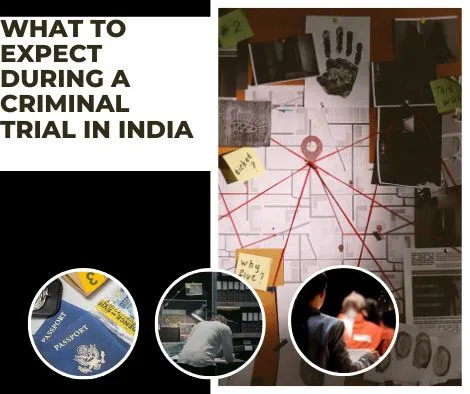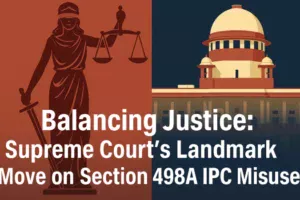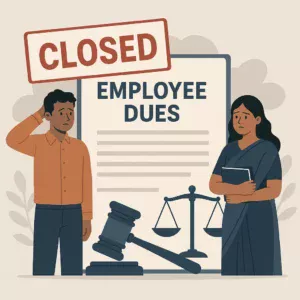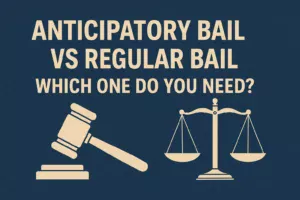Introduction
In India, the concept of mutual divorce is gaining recognition as a more amicable and less adversarial approach to ending a marriage. Mutual divorce, as governed by the Hindu Marriage Act, 1955, and the Special Marriage Act, 1954, offers a dignified, consensual end to a marriage with less hostility and emotional distress. This comprehensive guide will walk you through the step-by-step process of mutual divorce in India, providing clarity and understanding of the legal proceedings involved.
Understanding Mutual Divorce
Mutual divorce refers to the dissolution of marriage with the consent of both spouses, where they agree upon terms like alimony, child custody, and property division. This method is generally quicker, less complicated, and less stressful compared to contested divorce proceedings.
Eligibility for Mutual Divorce

- Marriage Duration: The couple should be married for at least one year before filing for divorce.
- Separation Period: The couple must have been living separately for at least one year.
- Consent: Both parties must mutually agree on the terms of the divorce.
Step-by-Step Process of Mutual Divorce in India
Step 1: Filing the Petition

The first step is to file a ‘Joint Petition for Divorce by Mutual Consent’ in the family court of the city where:
- The marriage was solemnized.
- The couple last lived together.
- The wife is currently residing.
The petition should include details such as marriage history, grounds for divorce, and arrangements for alimony, child custody, and property division.
Step 2: Appearing Before the Court

After filing the petition, the couple must appear before the court to record their statements, confirming their mutual consent for the divorce. The court then issues a six-month waiting period, known as the ‘cooling-off period,’ to give the couple time to reconsider their decision.
Step 3: First Motion

During the first motion, the couple’s statements are recorded, and the terms of settlement are documented. The couple must affirm their decision for mutual divorce and their willingness to live separately.
Step 4: The Cooling-Off Period

The cooling-off period of six months is provided to the couple before they can file the second motion. This period allows them to introspect and reconsider their decision to divorce.
Step 5: Second Motion and Final Hearing

After the cooling-off period, if the couple still wishes to proceed with the divorce, they can file the second motion. This is followed by the final hearing, where the court reviews the consent terms and ensures that the decision is made out of free will, without any coercion or undue influence.
Step 6: Decree of Divorce

If the court is satisfied with the proceedings and the mutual consent of both parties, it grants the decree of divorce, legally dissolving the marriage.
Key Considerations
- Legal Representation: While mutual divorce is simpler, legal representation is advisable to navigate the legalities and documentation.
- Settlement Agreement: Drafting a comprehensive settlement agreement covering all aspects like child custody, alimony, and property division is crucial.
- Voluntary Consent: Mutual consent should be voluntary and free from any pressure or coercion.
- Resolving Disputes: Any disagreements or disputes should be resolved before filing the petition.
Conclusion
Mutual divorce in India is a pragmatic approach that minimizes the emotional and financial toll of marital dissolution. Understanding the legal process and following the steps diligently can ensure a smooth and respectful conclusion to the marriage.
Final Thoughts
In summary, mutual divorce in India is a process characterized by mutual consent, respect, and understanding. It is a viable option for couples seeking a dignified end to their marriage, ensuring that the emotional and legal complexities are handled with care and consideration. By following the step-by-step process and seeking appropriate legal counsel, couples can navigate their way to a new beginning with minimal distress and complications.
FAQ: Mutual Divorce Process in India Step-by-Step
- What is a mutual divorce in India?
Mutual divorce in India refers to the dissolution of marriage with mutual consent, where both spouses agree on the terms of separation. - What are the legal grounds for mutual divorce in India?
The primary legal ground is the mutual consent of both parties, indicating their voluntary decision to dissolve the marriage. - What is the first step in the mutual divorce process in India?
The first step is filing a joint petition for divorce by both spouses in the family court. - How long does the mutual divorce process take in India?
The process generally takes 6-18 months, subject to the court’s schedule and the specifics of the case. - What documents are required for filing a mutual divorce?
Required documents typically include marriage certificate, identity proofs, address proofs, and photographs. - Is the presence of both spouses required in court for a mutual divorce?
Yes, both spouses need to be present in court for the filing and subsequent proceedings. - What are the major terms to be settled in a mutual divorce?
Terms include alimony, child custody, property distribution, and any other marital issues. - How is alimony decided in a mutual divorce in India?
Alimony is decided based on mutual agreement, considering factors like the spouse’s income, lifestyle, and duration of marriage. - Who gets child custody in a mutual divorce?
Child custody is decided based on the child’s best interests, either as joint or single custody. - Can mutual divorce be contested after filing?
Once filed, mutual divorce cannot be contested, but the petition can be withdrawn by either spouse. - What is the cooling-off period in mutual divorce?
It’s a mandatory 6-month period to reconsider the decision, which can be waived off under certain circumstances. - Is a lawyer necessary for a mutual divorce in India?
While not mandatory, a lawyer can help navigate the legal process and ensure all formalities are correctly handled. - How are assets divided in a mutual divorce?
Assets are divided based on mutual agreement between the spouses. - Can NRIs file for mutual divorce in India?
Yes, NRIs can file for mutual divorce in India if their marriage was registered in India or they were residing in India. - What happens if a spouse doesn’t attend divorce proceedings?
The court may pass a decree of divorce in their absence if the other spouse attends. - Can mutual divorce be expedited in India?
The process can be expedited if both parties agree and the court finds no reason to delay. - Are online mutual divorce services reliable in India?
Online services can be convenient, but it’s crucial to ensure they are credible and legally sound. - How is child support determined in a mutual divorce?
Child support is based on the child’s needs and the parents’ financial capacity, decided mutually. - What is the role of a mediator in a mutual divorce?
A mediator can help the couple reach an agreement on contentious issues. - Can mutual divorce terms be modified after the decree?
Post-decree modifications can be made if both parties agree and the court approves. - Is counseling required before filing for mutual divorce?
Counseling isn’t legally required but can be beneficial in amicable separations. - How does mutual divorce impact joint property?
Joint property is usually divided as per mutual agreement or as decided by the court. - Can mutual divorce affect one’s credit score in India?
Divorce itself doesn’t affect credit score, but joint debts and financial settlements can. - What is the cost of mutual divorce in India?
Costs vary based on lawyer fees, court fees, and other legal expenses. - How to choose a lawyer for mutual divorce?
Look for a lawyer specializing in family law with experience in mutual divorce cases. - Can mutual divorce be filed online in India?
The initial filing can be done online, but physical presence is required for subsequent proceedings. However Mutual Divorce can be done through video conferencing. - What are the emotional impacts of mutual divorce?
Emotional impacts can include stress, relief, sadnessSources:-
















